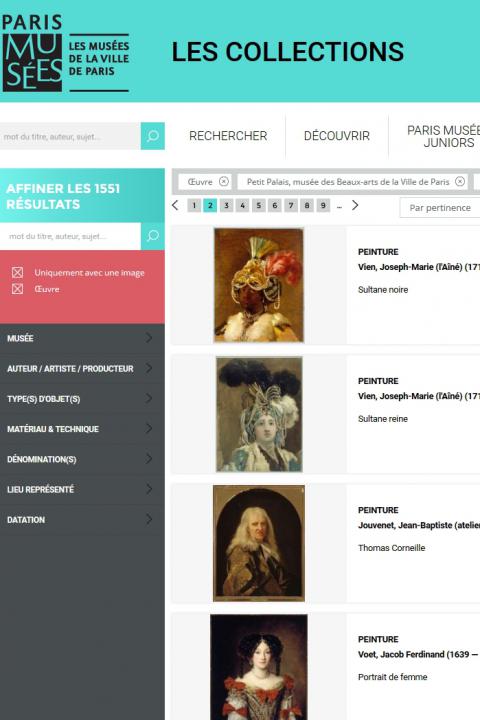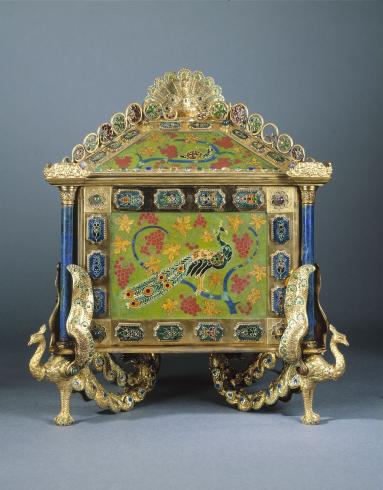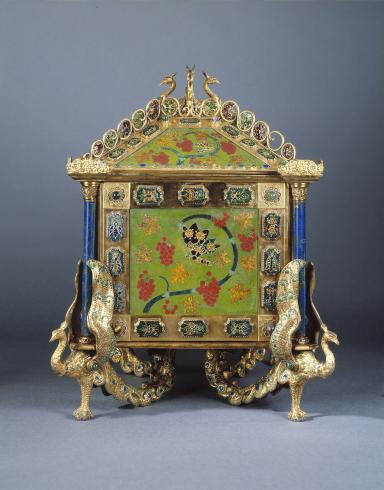Armand Point trained initially under the watercolourist and landscape painter Auguste-Clément Herst. A visit to North Africa inspired him to paint a series of Orientalist works, several of which were acquired by the state. In 1894, he travelled to Italy and was filled with enthusiasm for the Renaissance painters.
From 1895 onwards, he experimented with enamelling and set up an artists’ colony in the forest of Fontainebleau, which the poet Elémir Bourges named Hauteclaire after the sword of Roland’s companion Olivier in the medieval epic. The peacock casket was inspired by one of the masterpieces of the goldsmith’s art from the Limousin region preserved at the Musée de Cluny in Paris. Armand Point used different enamelling techniques to create a very refined object. The decorative unity of the casket is maintained by the peacock motif chased on the base of the casket in the form of a foot and spreading its tail on the top of the roof. On the four sides, enamelled peacocks display their trailing tail feathers amidst tangled vine boughs.
The peacock, symbol of immortality, and the bunches of grapes alluding to the Passion of Christ and the Eucharist are two motifs borrowed from early Christian art. The richness of colour based on harmony between greens and reds and the elegance of the lines in the form of arabesques make this casket one of the most stunning examples of Symbolist decorative art.
D. M.

City of Paris municipal collection's website
The collections portal can be used to search the collections of Paris’s 14 municipal museums (approximately 336,000 works, including 43,000 belonging to the Petit Palais).
It is also possible to download around 12,000 images of the museum’s works free of charge.
Access the Museums of the City of Paris collections portal
Extern databases
Discover a selection of databases online presenting works from the Petit Palais or documents concerning the history of the museum.


